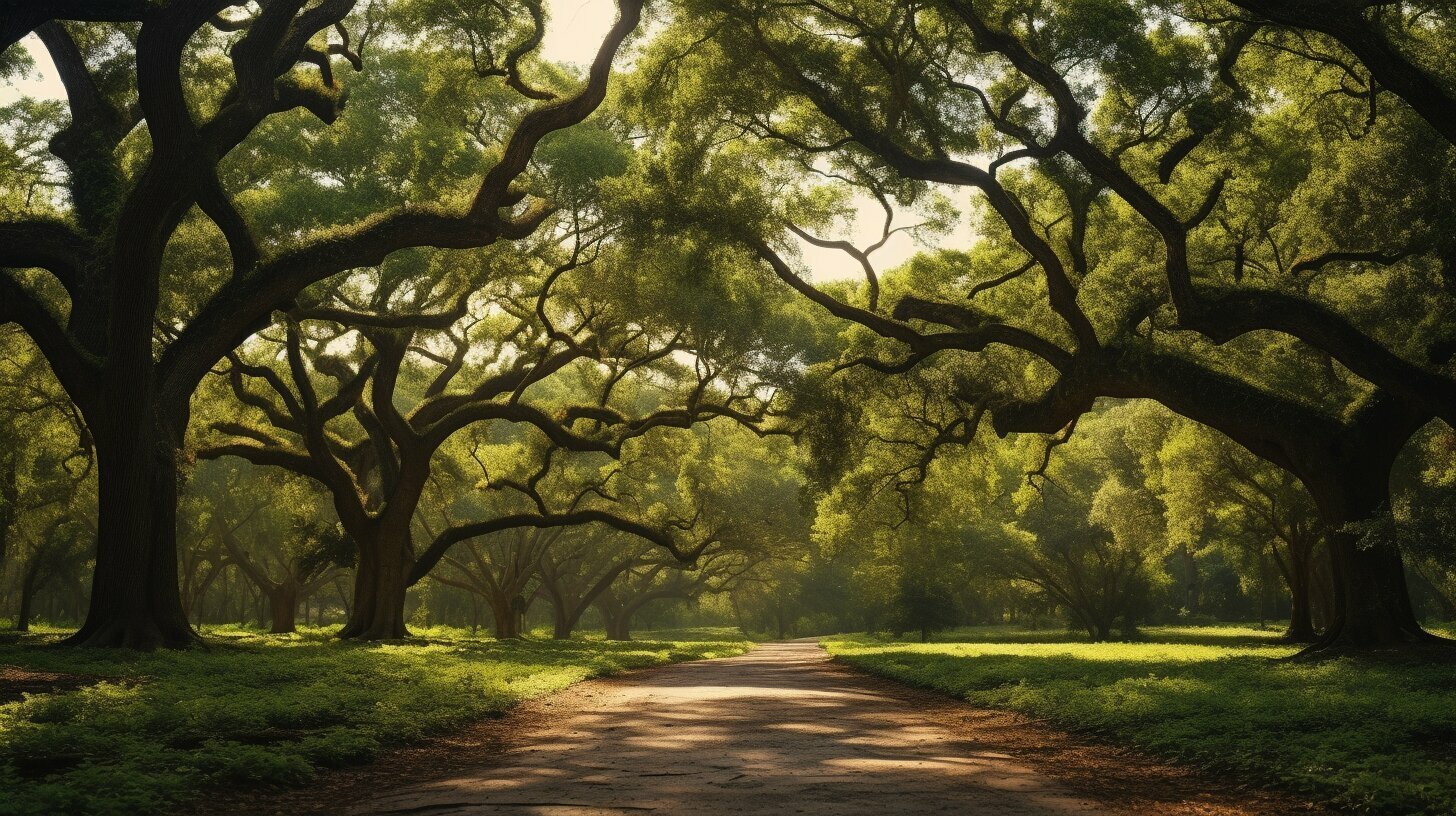Table of Contents
- Understanding Oak Trees and Their Importance
- Threats to Oak Trees: Diseases and Environmental Challenges
- Conservation Efforts and Organizations
- Benefits and Uses of Oak Trees
- Reforestation and Habitat Restoration Efforts
- Conclusion: Taking Action for Oak Tree Conservation
- FAQ
- Q: Why is Oak Tree conservation important?
- Q: What are some threats to Oak Trees?
- Q: How can I support Oak Tree conservation?
- Q: What are the benefits and uses of Oak Trees?
- Q: How can I contribute to reforestation and habitat restoration efforts for Oak Trees?
- Q: What is the significance of Oak Trees as a food source?
Oak Trees are not only beautiful, but they also play a critical role in supporting vital ecosystems and sustaining life on Earth. Sadly, Oak Tree conservation has been largely ignored, resulting in a decline in their population and the habitats they provide for countless species.
It’s time to take action and support the mission of Oak Tree conservation. By doing so, we can help preserve these magnificent trees and the ecosystems they support for generations to come.
Key Takeaways
- Oak Trees are vital ecosystems that sustain life on Earth.
- Conservation efforts for Oak Trees are crucial for preserving their habitats.
- Supporting Oak Tree conservation is essential for maintaining biodiversity.
Understanding Oak Trees and Their Importance
Oak Trees, scientifically known as Quercus, are a diverse group of trees that are found all over the world. They are classified as either deciduous or evergreen, depending on the species. One of the most recognizable features of the Oak Tree is its iconic acorn fruit, which provides a vital food source for many wildlife species.
Aside from their aesthetic qualities, Oak Trees play a crucial role in habitat restoration and supporting wildlife habitat. They are a vital component of ecosystems, contributing to the maintenance of biodiversity and the provision of ecosystem services. Oak Trees provide shelter and nesting sites for birds, insects, and mammals, and their leaves serve as a food source for various caterpillars and other herbivorous species.
The benefits of Oak Trees extend beyond their ecological importance. They are also valued for their economic contribution, particularly in the timber industry. Oak is a dense and durable hardwood that is used in the production of high-quality furniture, flooring, and other wood products. Additionally, Oak Trees also provide firewood and are used for cork production.
There are various species of Oak Trees, each with their own unique characteristics. Curiously, the shape and texture of Oak leaves can help identify the species to which they belong. The height of Oak Trees also varies, with some species reaching over 100 feet tall. In addition, the caps of acorns found on Oak Trees differ in shape and size, and the texture of the bark varies as well.
Overall, Oak Trees are a vital component of not only our environment but also our economy and society as a whole. To ensure their continued contribution, it is imperative that we take steps to protect and conserve these valuable trees and the ecosystems that depend on them.
Threats to Oak Trees: Diseases and Environmental Challenges
While Oak Trees are essential to our planet’s ecosystem, they face numerous threats that hinder their growth and survival. These threats include diseases like Oak Wilt and Sudden Oak Death. The former is caused by a fungus that starts as a small wilt on the leaves and progresses rapidly, leading to death in a short time. The latter is caused by a water mold that attacks the tree’s trunk, causing cankers that eventually lead to the tree’s death.
Another significant threat to Oak Trees is the spread of Gypsy Moth. This insect feeds on Oak Tree leaves, causing damage and defoliation, which makes the tree more susceptible to other diseases and pests. The use of environmental laws and proper tree care practices, such as using pruning shears and soil test kits, can help prevent and address these challenges.
In addition to these challenges, Oak Trees also face threats from environmental issues such as deforestation, climate change, urban sprawl, pollution, and land degradation. Deforestation and urban sprawl destroy Oak Tree habitats, while pollution and land degradation harm the tree’s growth and development. Climate change causes more frequent droughts and damaging storms, which negatively impact the survival and growth of Oak Trees.
It is crucial to address these threats to Oak Trees to maintain their health and ensure their survival. By taking action to support environmental laws, promote responsible forest management, and address issues like deforestation, climate change, and pollution, we can help conserve Oak Trees and protect vital ecosystems.
Conservation Efforts and Organizations
The conservation of Oak Trees is not only important for the survival of these vital ecosystems but also for sustaining life on Earth. Thankfully, there are several organizations and efforts dedicated to Oak Tree conservation, including:
| Organization | Mission |
|---|---|
| Arbor Day Foundation | Designed to inspire people to plant, nurture, and celebrate trees. They provide education on proper tree care techniques and promote the importance of trees in our communities. |
| National Forest Foundation | The only non-profit organization solely dedicated to protecting and conserving America’s national forests and grasslands. They focus on reforestation efforts, supporting trails and recreation, and promoting responsible forest management. |
| The Nature Conservancy | A global conservation organization that works to protect the lands and waters on which all life depends. They focus on the restoration of degraded ecosystems, promoting ecotourism, and environmental education. |
Responsible forest management is also crucial for Oak Tree conservation. It involves a planned approach to managing a forest ecosystem in a way that ensures its sustainability for future generations. This includes monitoring the forest’s health, preventing over-harvesting, and promoting biodiversity.
Ecotourism and environmental education are additional strategies to support Oak Tree conservation. Ecotourism promotes responsible travel to natural areas, including forests, with the intention of conserving the environment while enhancing the well-being of local people. Environmental education helps people of all ages understand the importance of Oak Trees and appreciate the value of preserving them.
National parks can play a significant role in protecting Oak Trees. Parks such as Yosemite, Yellowstone, and Sequoia and Kings Canyon have large areas of old-growth forests that are vital for conservation efforts. These parks help protect Oak Trees by enforcing laws and regulations, providing educational programs, and offering habitat restoration projects.
Benefits and Uses of Oak Trees
Oak Trees are valued for their strength and durability, making them a popular choice for various uses. The benefits of Oak Trees extend beyond their physical attributes, as they provide habitat for wildlife and contribute to a healthy ecosystem.
| Timber | Oak Trees are commonly used for timber production due to their strength and resistance to decay. Oak wood is used for flooring, furniture, and building materials. |
|---|---|
| Furniture | Oak wood is a popular choice for furniture makers due to its durability and attractive grain pattern. Oak furniture can last for generations when properly cared for. |
| Firewood | Oak wood burns hot and slow, making it a popular choice for firewood. It is also a good choice for smoking meats and other foods. |
| Cork | The cork oak is an evergreen oak species that is harvested for its cork bark. Cork is used for wine bottle stoppers, flooring, insulation, and other applications. |
Oak Trees also come in a variety of leaf shapes, tree heights, acorn caps, and bark textures. These differences make for interesting and attractive features in landscaping and urban environments.
The benefits of Oak Trees go beyond their physical attributes. They provide habitat for a wide range of wildlife, including birds and small mammals. Oak Trees also contribute to a healthy ecosystem by improving air and water quality.
“The Oak Tree is emblematic of England, representing strength, endurance, and longevity.” -Nick Gibbs
Reforestation and Habitat Restoration Efforts
Reforestation and habitat restoration are crucial for Oak Tree conservation. Afforestation is the process of planting trees in areas where there were no trees previously. This process helps increase forest cover and is essential for Oak Tree conservation.
Soil enrichment is crucial for Oak Tree growth. Loam soil, which is a mixture of sand, silt, and clay, is the best soil for tree growth. Sandy soil drains too quickly and has poor water-holding capacity, while clay soil retains water and may become waterlogged, both of which are unfavorable for tree growth.
Reforestation and habitat restoration projects involve planting trees and vegetation suitable for the specific site conditions. Soil testing is important to determine the suitability of the soil for Oak Tree growth. Soil amendments may be necessary to improve soil fertility and pH balance.
| Soil Type | Characteristics | Preferred Trees |
|---|---|---|
| Loam soil | Rich in nutrients, good water retention | Red Oak, White Oak, Black Oak |
| Sandy soil | Poor water retention, low nutrient content | Pin Oak, Water Oak, Shumard Oak |
| Clay soil | Retains water, poor aeration | Swamp Chestnut Oak, Cherrybark Oak, Nuttall Oak |
Reforestation and habitat restoration efforts also involve the removal of invasive species and the replanting of native species. Invasive species can outcompete native species for resources and disrupt the ecosystem. Native species, on the other hand, support biodiversity and provide food and habitat for wildlife.
Conclusion: Taking Action for Oak Tree Conservation
Overall, Oak Trees are crucial to maintaining the balance of ecosystems and sustaining life on Earth. As such, it is important to take action to ensure their conservation and protection. This includes supporting efforts like the Endangered Species Act, which helps safeguard Oak Trees and other endangered species from threats like habitat destruction and climate change.
Furthermore, the study of dendrology, or the scientific study of trees, can help us better understand Oak Trees and how to care for them. Factors like precipitation also play a significant role in Oak Tree growth, making it important to monitor and protect natural water sources that contribute to healthy ecosystems.
In addition to their ecological value, Oak Trees also serve as a vital food source for numerous wildlife species. By supporting Oak Tree conservation efforts, we can help ensure that these animals continue to have access to the resources they need to thrive.
Overall, it is clear that Oak Tree conservation matters, and we all have a part to play in protecting these crucial ecosystems. By taking action to support habitat restoration, responsible forest management, and environmental education, we can help ensure that Oak Trees continue to thrive for generations to come.
FAQ
Q: Why is Oak Tree conservation important?
A: Oak Tree conservation is important because Oak Trees are vital ecosystems that sustain life on Earth. They provide habitat for wildlife, maintain biodiversity, and contribute to habitat restoration efforts.
Q: What are some threats to Oak Trees?
A: Oak Trees face threats such as diseases like Oak Wilt and Sudden Oak Death, as well as environmental challenges including the spread of the Gypsy Moth, deforestation, climate change, urban sprawl, pollution, and land degradation.
Q: How can I support Oak Tree conservation?
A: You can support Oak Tree conservation by getting involved with organizations dedicated to this cause, such as the Arbor Day Foundation, National Forest Foundation, and The Nature Conservancy. Additionally, practicing responsible forest management, promoting ecotourism, and supporting environmental education are important actions.
Q: What are the benefits and uses of Oak Trees?
A: Oak Trees have various benefits and uses, including timber production, furniture making, firewood, and even cork production. Additionally, different species of Oak Trees have unique leaf shapes, tree heights, acorn caps, and bark textures.
Q: How can I contribute to reforestation and habitat restoration efforts for Oak Trees?
A: You can contribute to reforestation and habitat restoration efforts by supporting initiatives like afforestation and soil enrichment. Understanding the suitability of different soil types, such as loam, sandy soil, and clay soil, can also be beneficial.
Q: What is the significance of Oak Trees as a food source?
A: Oak Trees serve as a food source for various wildlife species, contributing to the overall ecosystem balance. They play a crucial role in providing sustenance for animals and supporting their survival.







